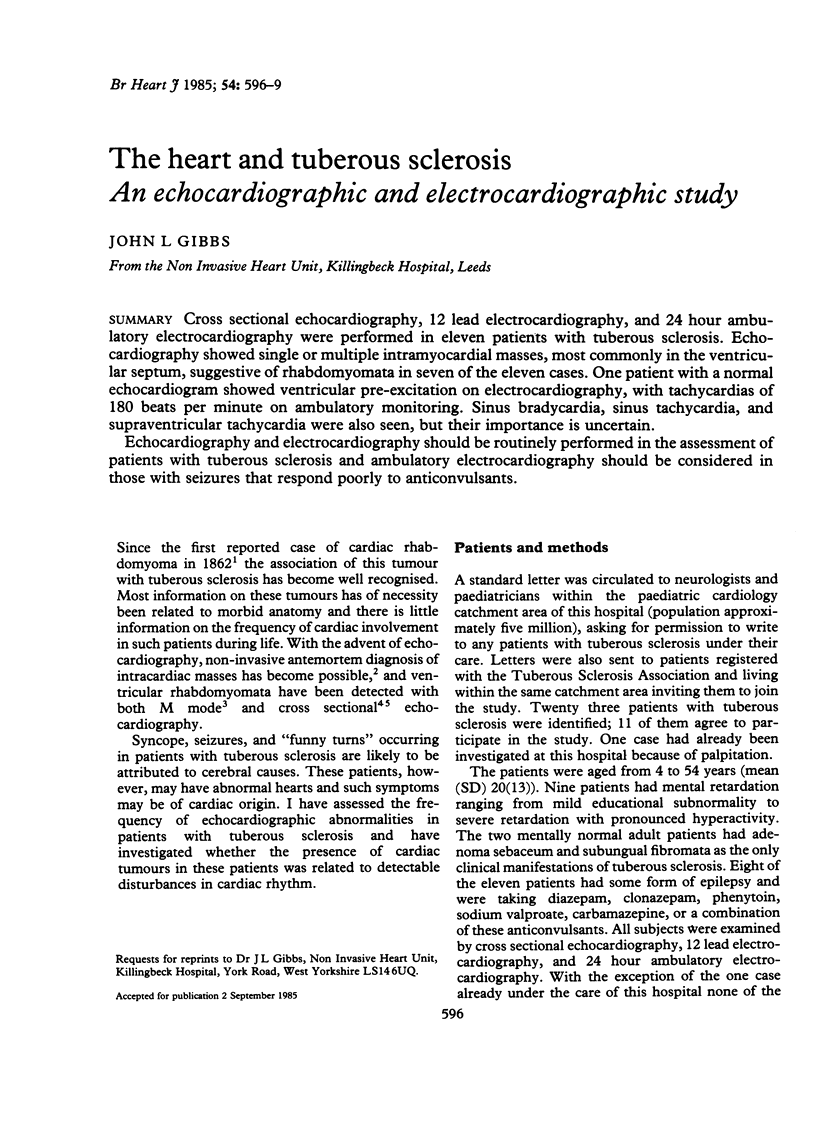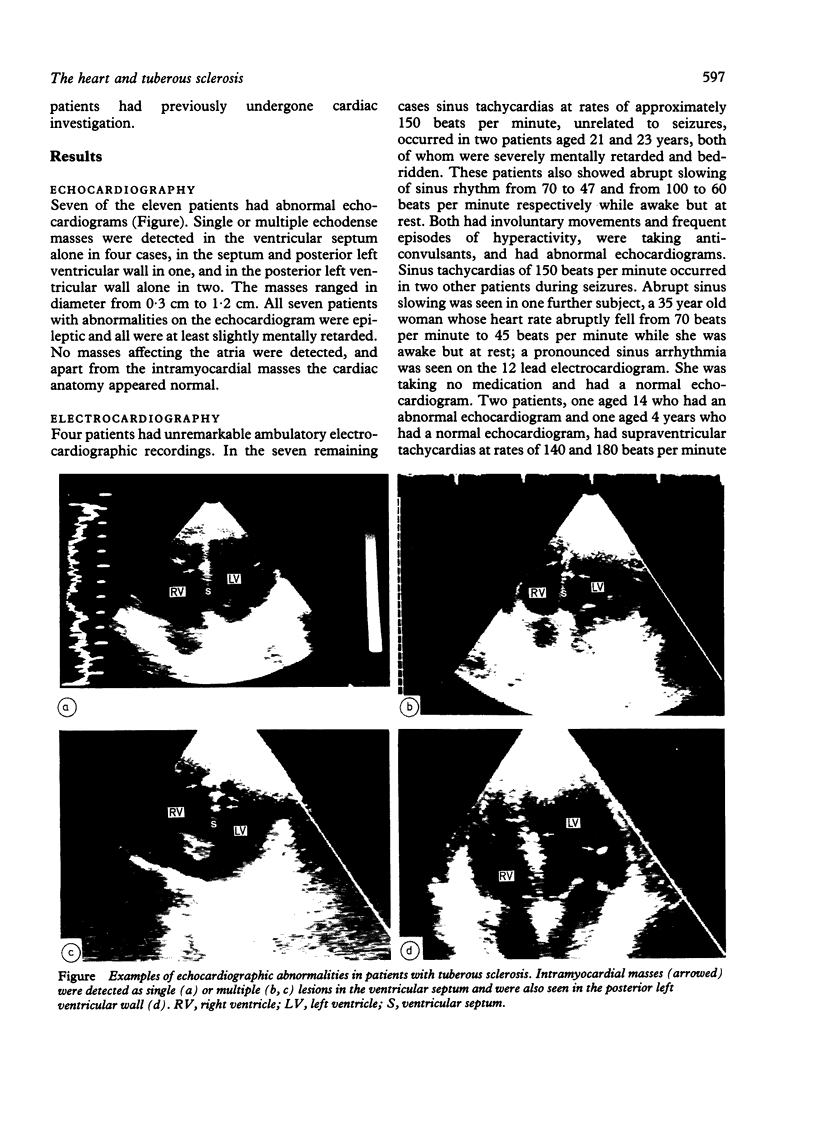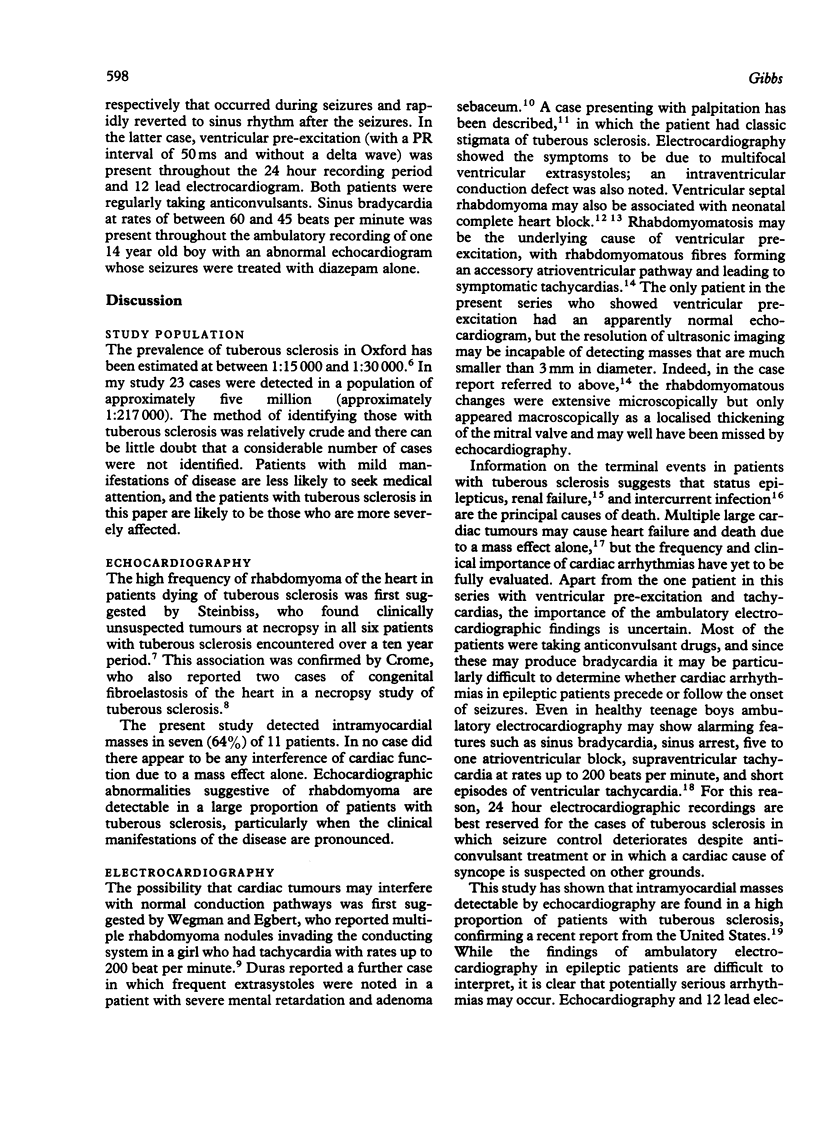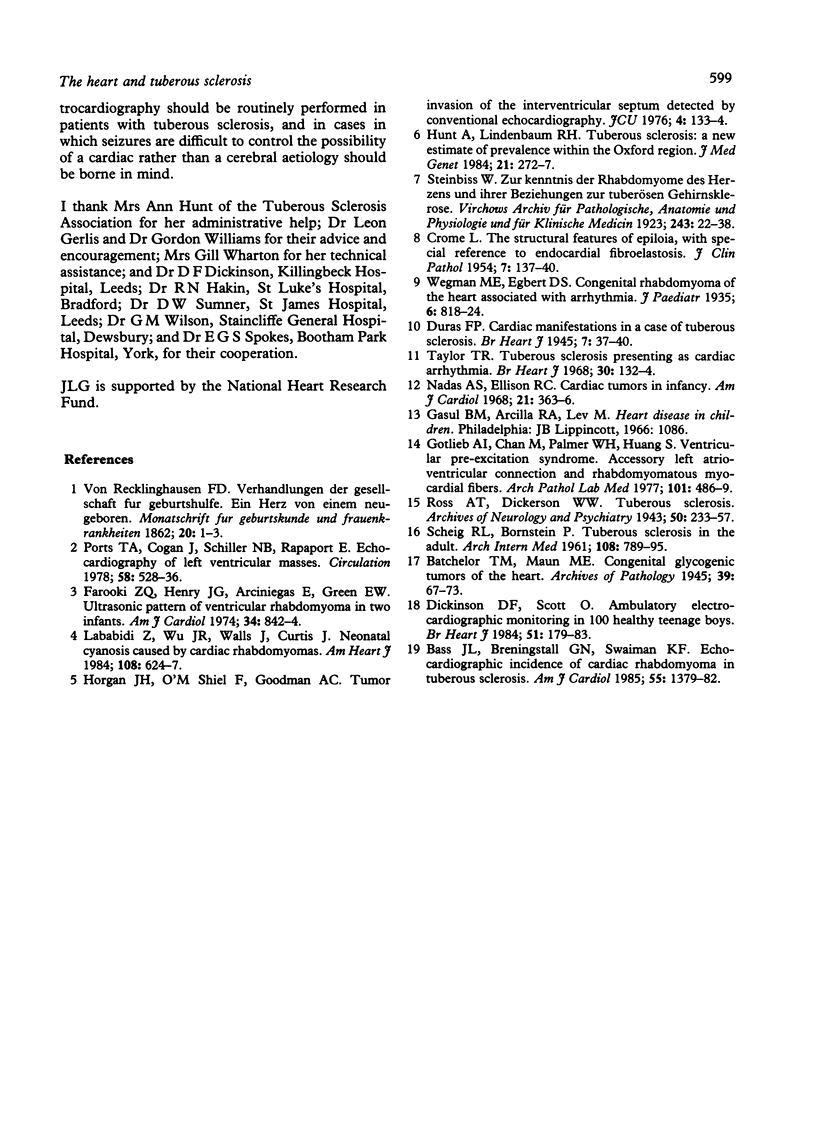Abstract
Cross sectional echocardiography, 12 lead electrocardiography, and 24 hour ambulatory electrocardiography were performed in eleven patients with tuberous sclerosis. Echocardiography showed single or multiple intramyocardial masses, most commonly in the ventricular septum, suggestive of rhabdomyomata in seven of the eleven cases. One patient with a normal echocardiogram showed ventricular pre-excitation on electrocardiography, with tachycardias of 180 beats per minute on ambulatory monitoring. Sinus bradycardia, sinus tachycardia, and supraventricular tachycardia were also seen, but their importance is uncertain. Echocardiography and electrocardiography should be routinely performed in the assessment of patients with tuberous sclerosis and ambulatory electrocardiography should be considered in those with seizures that respond poorly to anticonvulsants.
Full text
PDF



Images in this article
Selected References
These references are in PubMed. This may not be the complete list of references from this article.
- Bass J. L., Breningstall G. N., Swaiman K. F. Echocardiographic incidence of cardiac rhabdomyoma in tuberous sclerosis. Am J Cardiol. 1985 May 1;55(11):1379–1382. doi: 10.1016/0002-9149(85)90508-9. [DOI] [PubMed] [Google Scholar]
- CROME L. The structural features of epiloia, with special reference to endocardial fibroelastosis. J Clin Pathol. 1954 May;7(2):137–140. doi: 10.1136/jcp.7.2.137. [DOI] [PMC free article] [PubMed] [Google Scholar]
- Dickinson D. F., Scott O. Ambulatory electrocardiographic monitoring in 100 healthy teenage boys. Br Heart J. 1984 Feb;51(2):179–183. doi: 10.1136/hrt.51.2.179. [DOI] [PMC free article] [PubMed] [Google Scholar]
- Duras F. P. CARDIAC MANIFESTATIONS IN A CASE OF TUBEROUS SCLEROSIS. Br Heart J. 1945 Jan;7(1):37–40. doi: 10.1136/hrt.7.1.37. [DOI] [PMC free article] [PubMed] [Google Scholar]
- Farooki Z. Q., Henry J. G., Arciniegas E., Green E. W. Ultrasonic pattern of ventricular rhabdomyoma in two infants. Am J Cardiol. 1974 Dec;34(7):842–844. doi: 10.1016/0002-9149(74)90706-1. [DOI] [PubMed] [Google Scholar]
- Gotlieb A. I., Chan M., Palmer W. H., Huang S. N. Ventricular preexcitation syndrome. Accessory left atrioventricular connection and rhabdomyomatous myocardial fibers. Arch Pathol Lab Med. 1977 Sep;101(9):486–489. [PubMed] [Google Scholar]
- Hunt A., Lindenbaum R. H. Tuberous sclerosis: a new estimate of prevalence within the Oxford region. J Med Genet. 1984 Aug;21(4):272–277. doi: 10.1136/jmg.21.4.272. [DOI] [PMC free article] [PubMed] [Google Scholar]
- Lababidi Z., Wu J. R., Walls J., Curtis J. Neonatal cyanosis caused by cardiac rhabdomyomas. Am Heart J. 1984 Sep;108(3 Pt 1):624–627. doi: 10.1016/0002-8703(84)90441-1. [DOI] [PubMed] [Google Scholar]
- Nadas A. S., Ellison R. C. Cardiac tumors in infancy. Am J Cardiol. 1968 Mar;21(3):363–366. doi: 10.1016/0002-9149(68)90140-9. [DOI] [PubMed] [Google Scholar]
- Ports T. A., Cogan J., Schiller N. B., Rapaport E. Echocardiography of left ventricular masses. Circulation. 1978 Sep;58(3 Pt 1):528–536. doi: 10.1161/01.cir.58.3.528. [DOI] [PubMed] [Google Scholar]
- SCHEIG R. L., BORNSTEIN P. Tuberous sclerosis in the adult. An unusual case without mental deficiency or epilepsy. Arch Intern Med. 1961 Nov;108:789–795. doi: 10.1001/archinte.1961.03620110129017. [DOI] [PubMed] [Google Scholar]
- Taylor T. R. Tuberous sclerosis presenting as cardiac arrhythmia. Br Heart J. 1968 Jan;30(1):132–134. doi: 10.1136/hrt.30.1.132. [DOI] [PMC free article] [PubMed] [Google Scholar]



